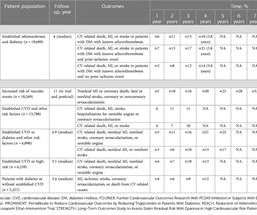Intermediate and long-term residual cardiovascular risk in patients with established cardiovascular disease treated with statins
Frontiers in Cardiovascular Medicine
JANUARY 14, 2024
Results CV event rates among patients treated with statins who have established CV disease, including coronary artery disease, cerebrovascular disease, or peripheral arterial disease, accumulate over time, with a cumulative incidence of CV events reaching up to approximately 40% over 10 years.










Let's personalize your content